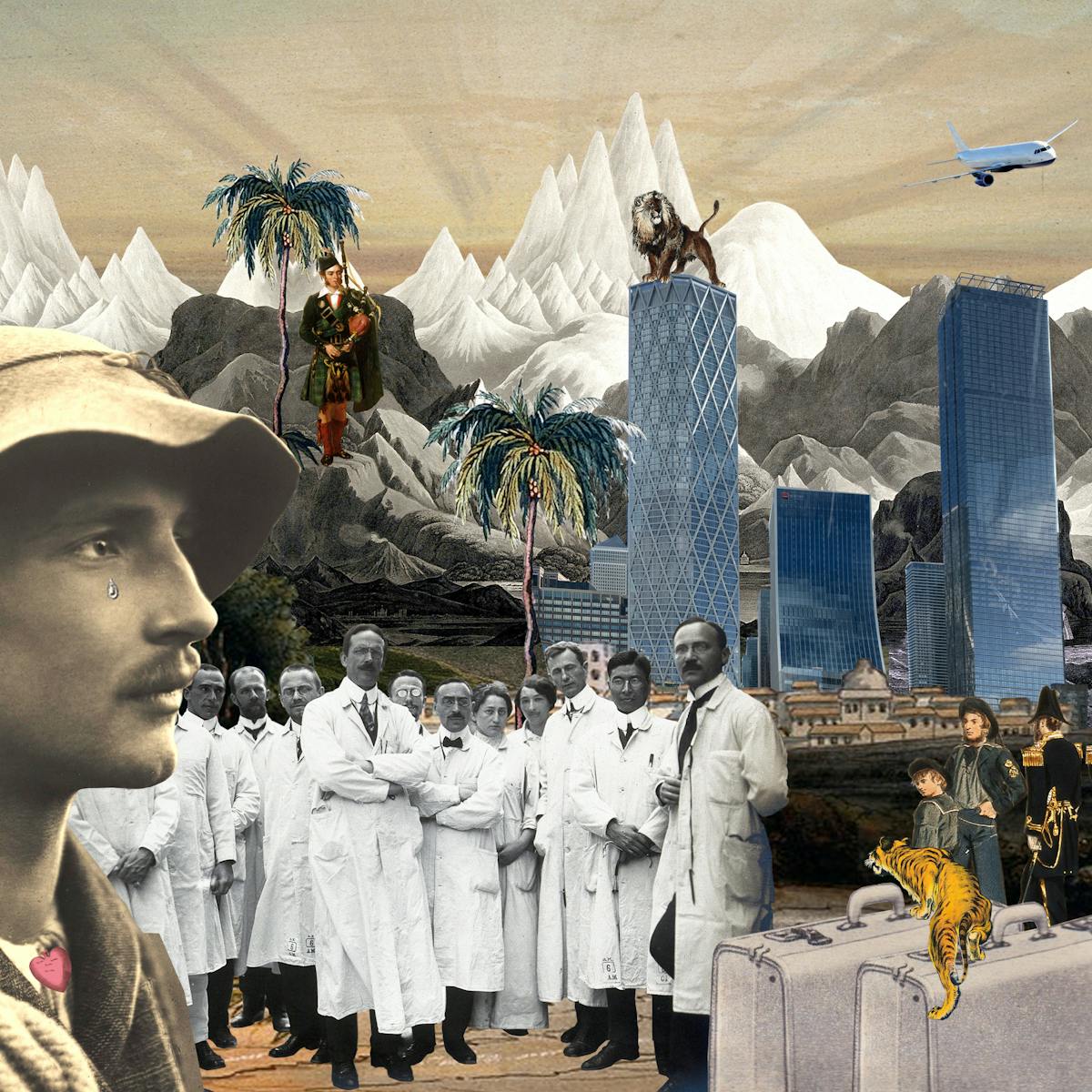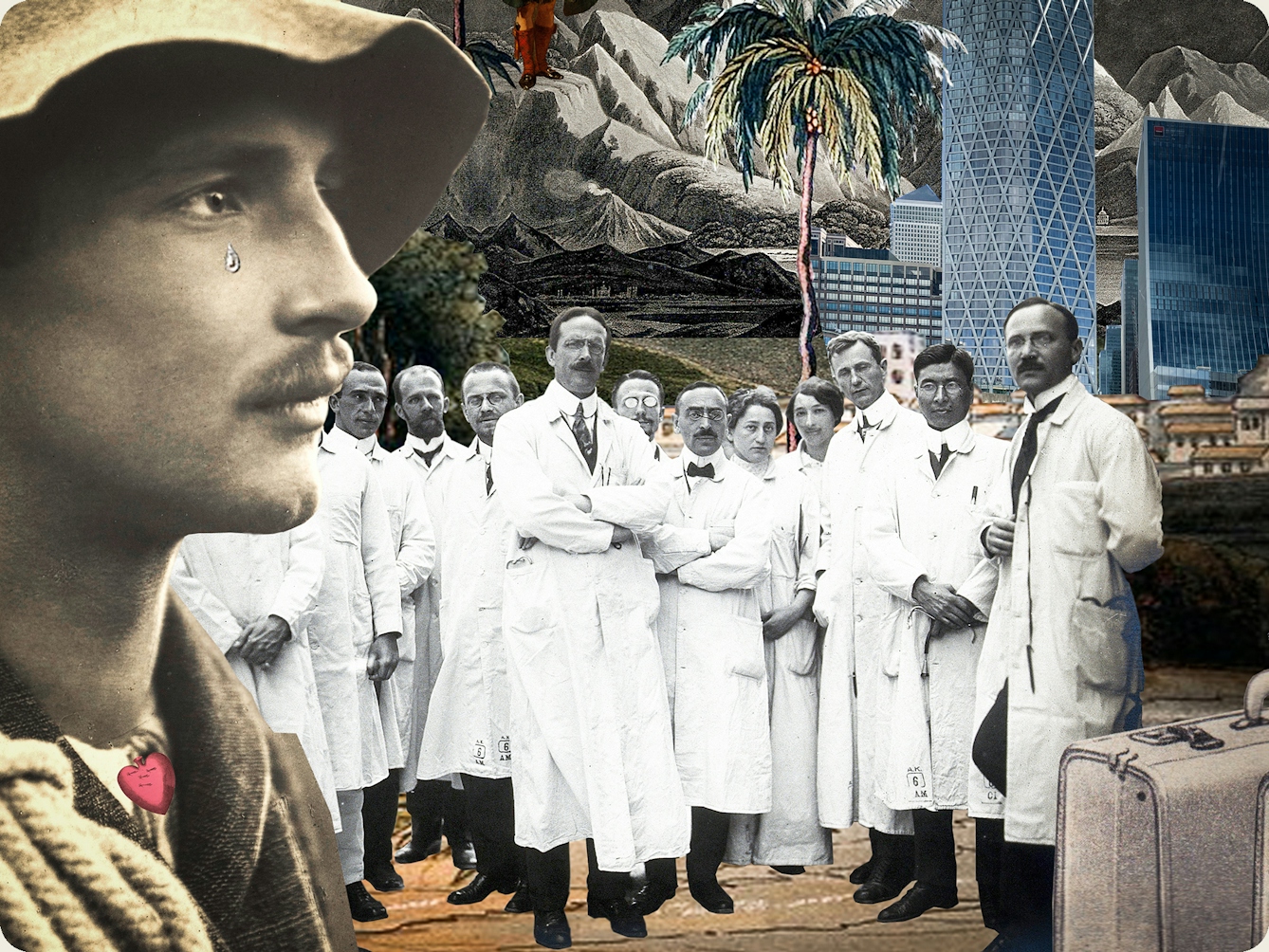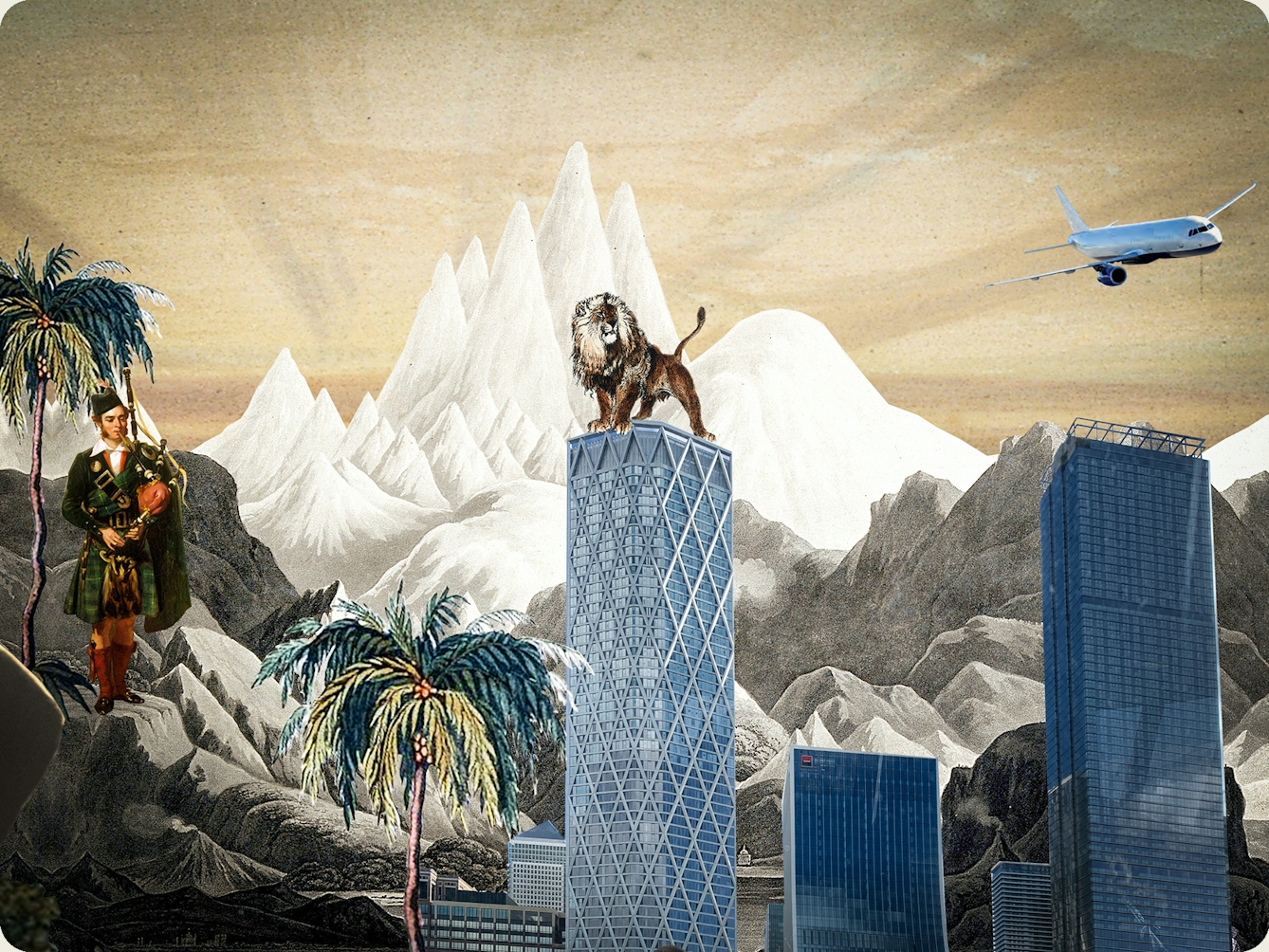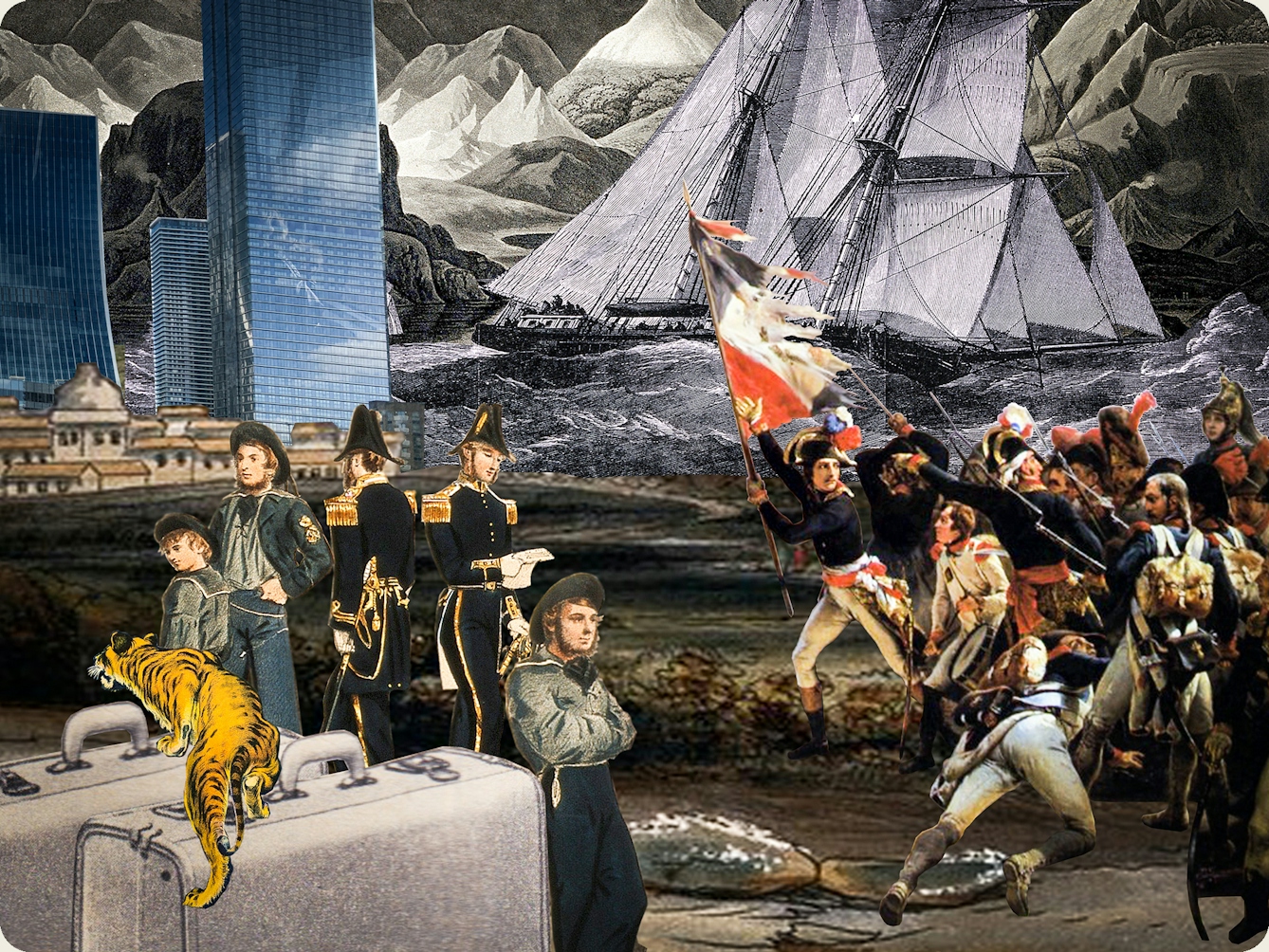Homesickness has come to be seen as something trivial, but was taken much more seriously in the past. In the guise of nostalgia, it was once classified as a real illness, and posed a serious threat – as the cause of desertion, or even death – to those commanding unwilling troops in wars of all kinds.
The hidden history of homesickness
Words by Gail Tolleyartwork by Maria Rivansaverage reading time 7 minutes
- Serial

In 2020, nostalgia is everywhere. It’s in the 1990s-style fashion that’s made a comeback on the high street. It’s in our love for old TV shows (another episode of ‘Buffy’, anyone?). And it’s in our obsession with all things vintage, from vinyl to Polaroids.
I thought I had a clear idea of what nostalgia was – that rose-tinted view of the past, or that warm feeling when flicking through a box of old photos. But the original meaning of nostalgia, I discover, is something a little different. The word was coined by Johannes Hofer, a 17th-century German physician at the University of Basel. It comes from the Greek nostos, meaning homecoming and algos, meaning pain. Nostalgia, to my surprise, originally meant homesickness.
Here’s another thing I didn’t expect: the word wasn’t used to describe an emotion. From the 17th to the 19th centuries, nostalgia was seen by doctors as a serious medical condition. It included a range of symptoms both physical (fever, fatigue, digestive complaints) and mental (depression and longings for home). And it was known to cause deaths.
Had I taken my homesick childhood self back to the 18th century, I would have been greeted with some knowing nods and concerned-looking doctors.
Hofer’s dissertation from 1688 was the first time nostalgia was mentioned in medical literature. In it, Hofer describes the “grief of the lost charm of the native land”. He traces its physical manifestation “along uncommon routes through the untouched courses of the channels of the brain to the body”.
To illustrate the debilitating condition, he gives the account of a young man who had moved from his home town of Basel to study in Berne. The patient experienced a constant fever and, as time went on, he grew weaker and weaker. After a diagnosis of nostalgia, it was arranged for him to return home.

"From the 17th to the 19th centuries, nostalgia was seen by doctors as a serious medical condition."
Hofer continues the story: “After this plan had been heard ... the patient, nearly half-dead, began to draw breath more freely, to respond to enquiries more easily, and to show a better tranquillity of mind. Moreover, he was scarcely some few miles from [Basel], when all the symptoms abated to such a great extent ... he was restored to his whole sane self before he entered Berne.”
Reading this account in 2020, it almost has the feel to me of a miracle story from the Bible. Nostalgia was clearly a medical mystery, and it was to stay that way for some time.
Sick with nostalgia
At first it was thought that some mechanical cause might be at the root of nostalgia. In 1705 Swiss physician Johann Jakob Scheuchzer suggested that nostalgia could be the result of individuals moving from the Swiss mountains to lower-pressure areas – a kind of reverse altitude sickness. Other doctors believed there was a pathological ‘nostalgia bone’ and embarked on a futile hunt for it.
By the mid 1700s, despite its cause not being understood, it was well established as a disease in medical literature. The ‘Onomatologia Medica’, a medical dictionary of the time, describes the slow deterioration of a nostalgic patient. “The individual's vitality, both as to colour and activity, declines, and little by little his health deteriorates, leading to complaints and serious diseases, some affecting the body alone, others the mind as well.”
The affliction was not confined to one-off cases. And while it was seen in both men and women, it was mostly associated with soldiers sent off to war. During the French Revolution, 1789–99, there were even accounts of epidemics of mal du pays (which even my basic GCSE French can translate to ‘homesickness’).
Levée en masse – forced conscription – had uprooted thousands of rural workers and placed them in dire army camps; unsurprisingly, many of them desperately wanted to return home. In a sign of how seriously the illness was taken, a diagnosis of nostalgia was the only reason a soldier would be granted leave.

"In 1705 Swiss physician Johann Jakob Scheuchzer suggested that nostalgia could be the result of moving from the Swiss mountains to lower-pressure areas – a kind of reverse altitude sickness."
As time went on and medical knowledge grew, the idea of nostalgia as an illness in its own right began to fade. Some of the physical aspects formerly linked to nostalgia were ascribed to other illnesses, including scurvy and tuberculosis. By the late 19th century it had fallen from favour as a diagnosis. But before then, nostalgia would have a resurgence on the other side of the Atlantic – during the American Civil War of the 1860s.
A noble longing
This is where Dr Susan Matt, Professor of History at Weber State University in Utah, picks up the story in ‘Homesickness: An American History’. The inspiration for her book came from her own experiences. Having moved from the Midwest to the mountains of Utah, she was surprised by how difficult relocating was.
“I had grown up with all the literature that said Americans in particular are not homesick – they are naturally restless,” she tells me. “It was supposedly this innate trait, and we were able to get up and move without any sorrow or regret. I just thought: this isn’t my experience at all.”
She wondered if there was a hidden history of homesickness in the States. “I visited lots of archives, so it wasn’t a project without effort. But every single archive I went to, I never came away empty-handed. Once you start looking for it, homesickness is really written all over American history.”
Nostalgia – as a medical condition – was documented widely during the American Civil War. Matt found more than 5,200 cases recorded, including, on the Union side, 74 deaths. In a similar scenario to the epidemic during the French Revolution, nostalgia was viewed as a very real threat to troops. So much so that certain songs, believed to be triggers for domestic yearning (or possible desertion), were banned. They included ‘Home Sweet Home’ (the most popular song of the time) and ‘Auld Lang Syne’.
There’s one aspect of Susan Matt’s research that I find particularly illuminating in understanding homesickness today. She suggests a compelling reason as to why it has not only fallen out of fashion as a term but also – as I had come to notice – been infantilised, trivialised and overlooked.

"During the French Revolution there were even accounts of epidemics of mal du pays ... a diagnosis of nostalgia was the only reason a soldier would be granted leave."
Homesickness, she argues, was incongruent with the growing forces of capitalism that were taking hold. In an economy that needs mobile workers, there’s no place for an emotion that holds people back, that keeps them tied to the place they were born.
Susan Matt says, “During the American Civil War, homesickness is a noble condition because it signifies your love of wife or mother or children, and it signifies your rootedness. These were all seen as virtues. It was also a signal of your sensitivity. But by the 20th century and the age of corporate capitalism, it became a weakness.”
How shell shock displaced nostalgia
I had been wondering why homesickness was overwhelmingly seen as something a little silly or shameful. What a surprise to find the answer had its roots reaching back more than a century.
By World War I, nostalgia as a medical term had disappeared almost completely. Matt highlights that there was just one death recorded due to nostalgia during that war, but also notes the increasing prevalence of ‘shell shock’, which most likely came to absorb many cases of mental anguish.
Homesickness didn’t disappear, but it did fall out of medical use. And ‘nostalgia’ came to mean something quite different: a phenomenon associated with a longing for a lost time rather than an absent place.
About the contributors
Gail Tolley
Gail Tolley is a travel and culture writer based in Edinburgh. She has twice been the editor of popular culture magazines: Time Out London (2017–19) and The List (2012–14). She has contributed to National Geographic Traveller, the Independent and BBC Radio 4. Alongside working as a freelance writer and broadcaster, she also works in TV development.
Maria Rivans
Maria Rivans is a contemporary British artist known for her Surrealism-meets-Pop-Art aesthetic. With its unique approach to collaging, her artwork intertwines fragments of vintage ephemera, often with reference to film and TV, to spin bizarre and dreamlike tales. She exhibits work throughout the UK as well as internationally, including Hong Kong, New York and across Europe. Notable solo shows include the Saatchi Gallery, London and Galerie Bhak, Seoul.

